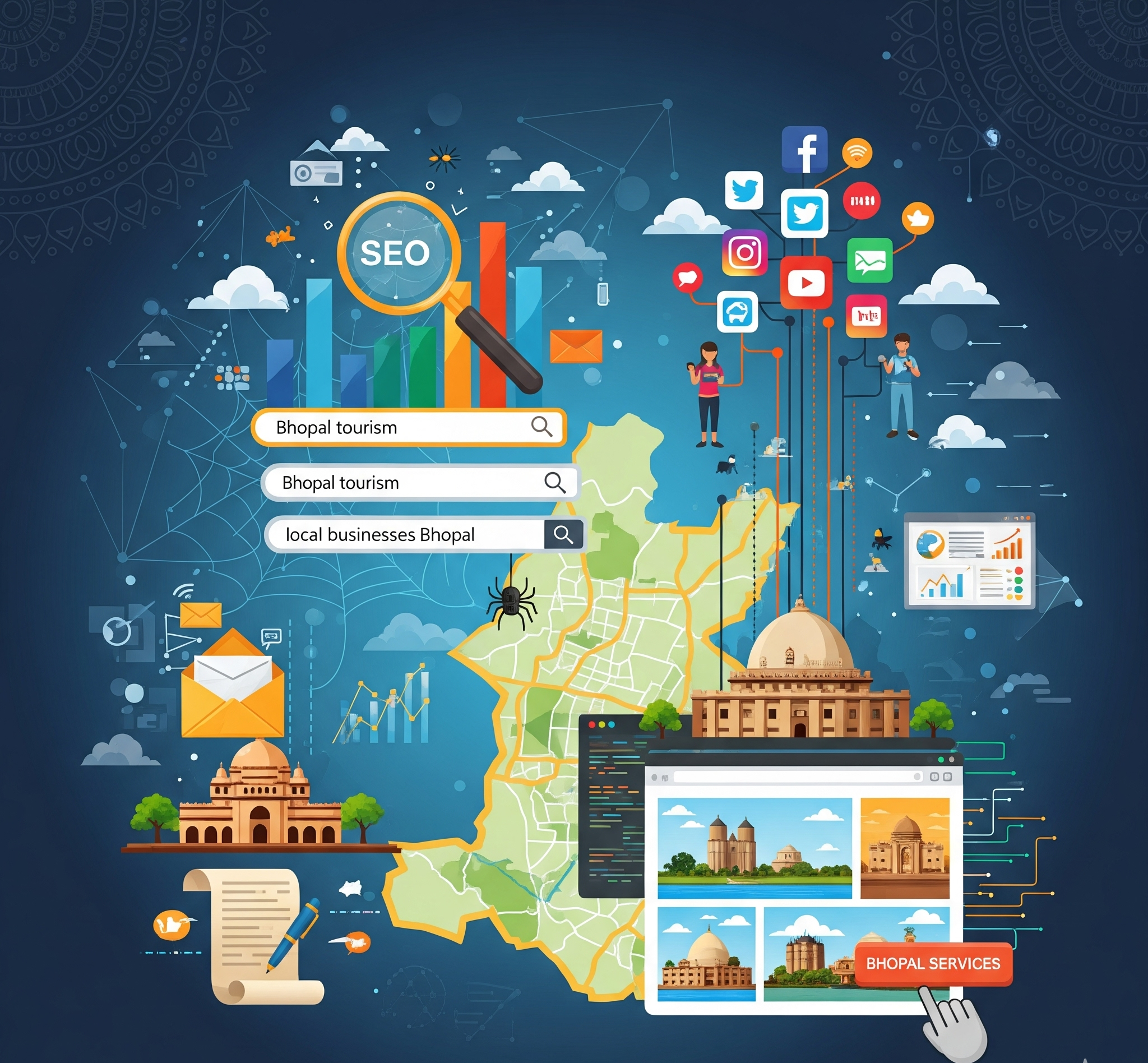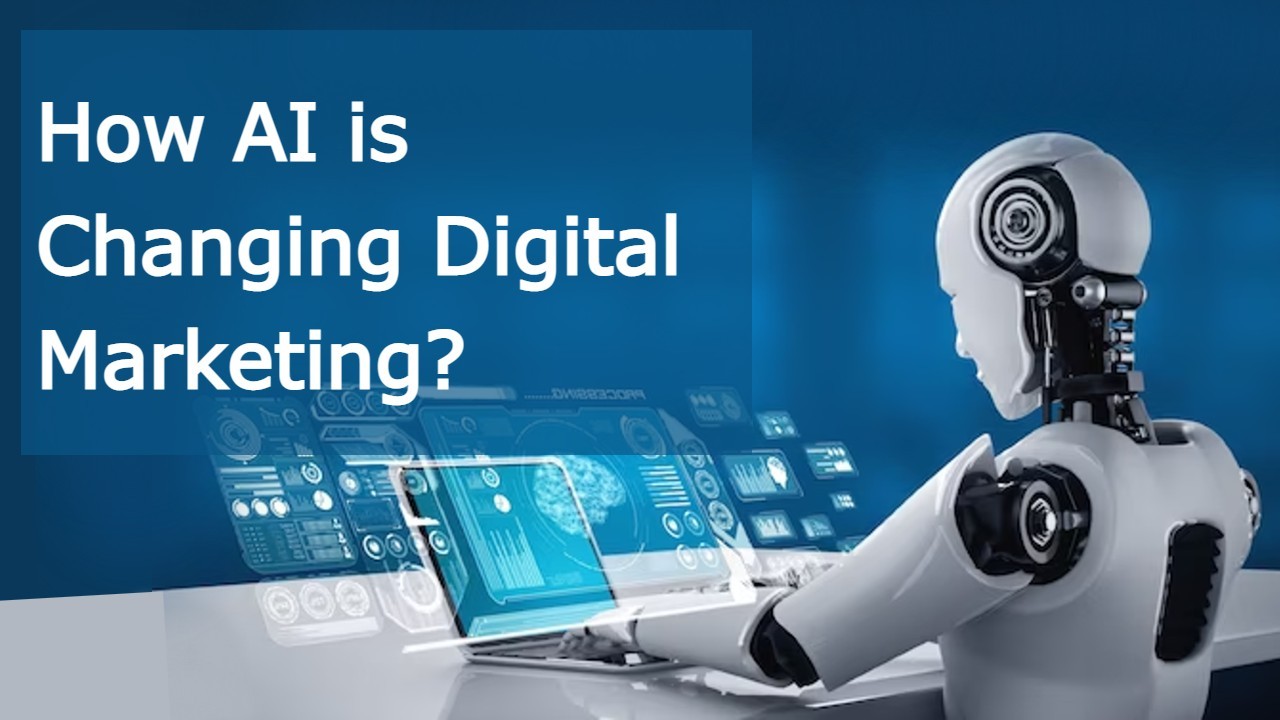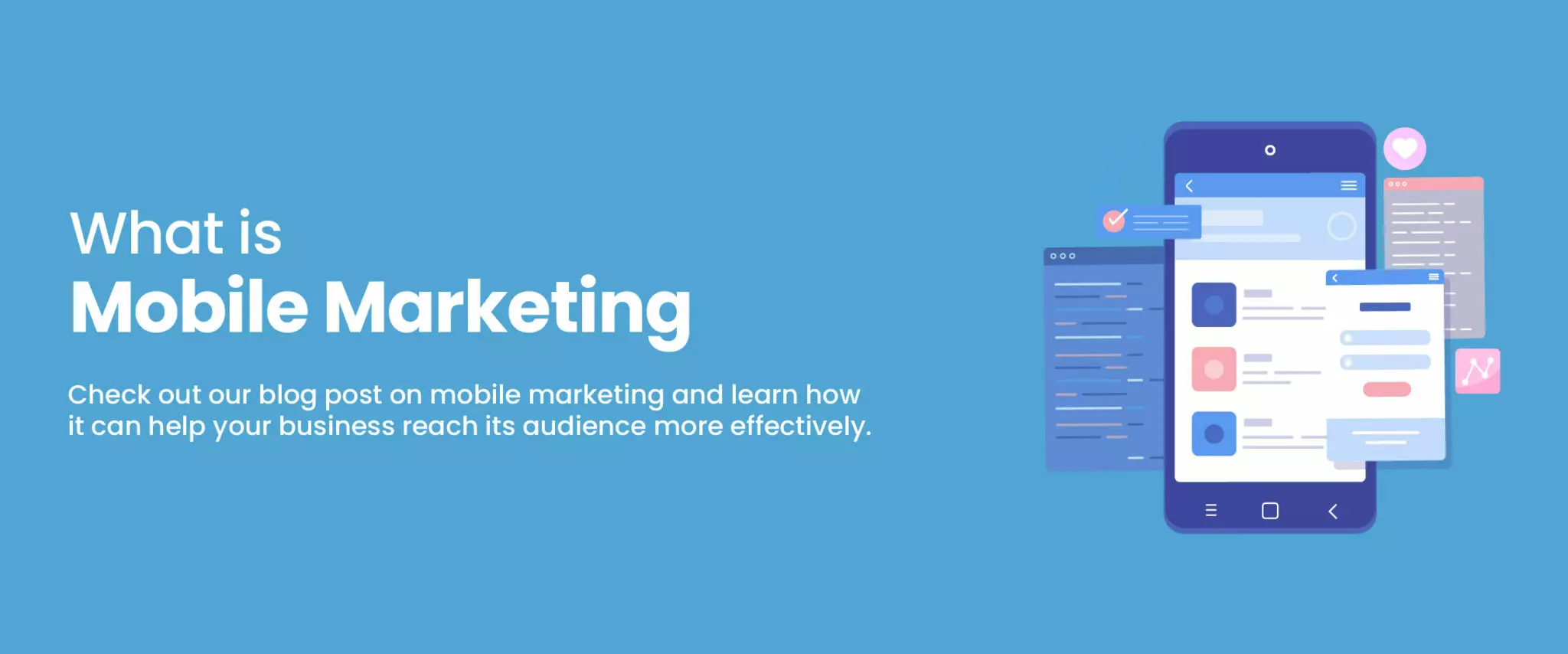Content Marketing
The Rise of Augmented Reality in Marketing: Opportunities and Challenges

Augmented reality in marketing (AR) is rapidly transforming the landscape of digital marketing, offering exciting opportunities for businesses to engage with their audience in innovative and immersive ways. From interactive product experiences to virtual try-on features, AR technology is revolutionizing the way brands connect with consumers and drive engagement. However, along with the opportunities come unique challenges that businesses must navigate to harness the full potential of AR in marketing. In this comprehensive guide, we’ll explore the rise of augmented reality in marketing, along with the opportunities it presents and the challenges businesses may encounter along the way Augmented reality in marketing.
Understanding Augmented Reality in Marketing

Augmented reality refers to technology that overlays digital information and virtual objects onto the real-world environment, typically viewed through a smartphone, tablet, or AR headset. In marketing, AR is used to create immersive experiences that allow consumers to interact with products, brands, and content in new and exciting ways. From AR-powered advertisements to virtual product demonstrations, businesses are leveraging AR to captivate and engage their audience like never before Augmented reality in marketing .
Opportunities of Augmented Reality in Marketing
1. Enhanced Engagement
AR experiences provide a higher level of engagement compared to traditional marketing tactics. By allowing consumers to interact with virtual objects and explore products in a 3D environment, AR creates memorable and immersive experiences that capture attention and drive engagement.
2. Personalized Experiences
AR technology enables businesses to deliver personalized experiences tailored to each individual consumer. From virtual try-on experiences for cosmetics and apparel to customized product demonstrations based on user preferences, AR allows brands to create unique and tailored experiences that resonate with their audience.
3. Increased Conversions
AR experiences have been shown to increase conversion rates by providing consumers with a better understanding of products and their features. By allowing consumers to visualize products in their real-world environment and make more informed purchasing decisions, AR can drive higher conversion rates and sales for businesses.
4. Brand Differentiation
AR can help businesses stand out from competitors by offering innovative and cutting-edge experiences that set them apart. Brands that embrace AR technology demonstrate their commitment to innovation and creativity, positioning themselves as industry leaders and driving brand differentiation in a crowded marketplace.
Challenges of Augmented Reality in Marketing : Augmented reality in marketing
1. Development Costs
Creating high-quality AR experiences can be costly and time-consuming, requiring specialized skills and resources. Businesses must invest in AR development tools, software, and talent to create immersive experiences that meet consumer expectations.
2. User Adoption
While AR technology continues to gain traction, widespread user adoption remains a challenge. Many consumers may not be familiar with AR or may be hesitant to download AR-enabled apps or engage with AR experiences. Educating consumers about the benefits of AR and providing seamless user experiences are key to overcoming this challenge.
3. Technical Limitations
AR experiences are limited by the capabilities of the devices and platforms used to access them. Factors such as device compatibility, processing power, and internet connectivity can impact the quality and performance of AR experiences. Businesses must consider these technical limitations when developing AR campaigns and ensure compatibility across a range of devices and platforms.
4. Privacy Concerns
AR experiences may collect and process sensitive user data, raising concerns about privacy and data security. Businesses must adhere to strict privacy regulations and ensure transparent data practices to build trust with consumers and protect their personal information.
Strategies for Success in AR Marketing : Augmented reality in marketing
1. Focus on User Experience
Prioritize user experience in AR marketing campaigns to ensure seamless and intuitive interactions. Design AR experiences that are easy to use, visually appealing, and provide clear value to the user.
2. Provide Value
Offer value to consumers through AR experiences by solving a problem, addressing a need, or enhancing their shopping experience. Whether it’s virtual product try-ons, interactive tutorials, or immersive brand storytelling, provide experiences that resonate with your audience and add value to their lives.
3. Promote Accessibility
Make AR experiences accessible to a wide audience by ensuring compatibility across devices and platforms. Consider developing web-based AR experiences that can be accessed directly through a mobile browser, eliminating the need for users to download a separate app.
4. Build Trust
Build trust with consumers by being transparent about data collection and usage in AR experiences. Clearly communicate how user data will be collected, stored, and used, and provide options for users to control their privacy settings.
5. Measure and Iterate
Track key performance indicators (KPIs) such as engagement metrics, conversion rates, and customer feedback to measure the success of AR marketing campaigns. Use this data to iterate and optimize future campaigns, continuously improving the user experience and driving better results.
Conclusion
Augmented reality presents exciting opportunities for businesses to create immersive and engaging experiences that captivate and delight consumers. By embracing AR technology and overcoming the associated challenges, businesses can drive engagement, increase conversions, and differentiate themselves in a competitive marketplace. By focusing on user experience, providing value, promoting accessibility, building trust, and measuring and iterating, businesses can unlock the full potential of augmented reality in marketing and stay ahead of the curve in an increasingly digital world.
Blog
7 Proven Techniques of the Best Digital Marketing Company in Bhopal

Today, there is no question that digital marketing is not a choice but rather a must. Whether you run a small local shop or a big national company, your online presence is crucial.
The top digital marketing agencies in Bhopal apply a combination of tactics including seo, social media marketing, web development and paid advertising in order to greatly grow your business.
In this post, we highlight 7 key strategies top digital agencies implement to drive traffic, gain leads and sales for local businesses in Bhopal.

Importance of Digital Marketing for in Bhopal Businesses
Bhopal is an evolving market and it’s completely dependent on internet surfing to let people make purchases. Whether it’s restaurant meals or real estate, customers go online for information before making purchases.
A good marketing agency in Bhopal can assist your business:
SEO and Social Media Optimization for more online visibility
Generate leads with targeted PPC ads Create qualified leads through PPC ads that are targeted to promote your firm for the services important to business owners.
Establish trust and authority through epic content
Personalize campaigns for a local market, so that your marketing is more relevant
Example:
A local restaurant making smart choices online can rank in “near me” searches, drive foot traffic and ramp up its online orders thanks to Google and Instagram ads.
Develop an Effective Digital Marketing Strategy
Every winning campaign begins with a detailed, actionable plan.
Your strategy should include:
Market research and competitor analysis
Knowing your audience and their needs
Selecting appropriate marketing channels (SEO, social media, PPC, etc.
Establishing Goals and KPIs to define success
Pro Tip:
Begin with organic marketing including SEO and social media. When you get the ball rolling, invest in some PPC advertising for quicker results.
Smart SEO with Latest Updates
SEO is the lifeblood of digital expansion. One of the best SEO companies in Bhopal has been working on following three factors.
On-page SEO: It relates to all factors on your own website which can be optimised for search engines like google, including content, meta tags and internal hyperlink building.
Off-page SEO: Generating quality backlinks and citations for local business
Technical SEO: Increasing speed, mobile responsiveness and site structure.
The ability of your site to evolve and avoid getting penalised is determined by its keep-it-fresh score, not the arbitrary date you published it.
Example Keyword Use:
“Our team stays up to date with the most recent SEO changes to help our clients rank and maintain their rankings over time.”
High-Performing Website Design & Development
Your website is essentially your digital shop front. Slow or poorly designed, potential customers will go elsewhere.
What A web design company in Bhopal does?
Mobile-friendly, responsive designs
Pages load in less than 3 seconds
SEO-friendly structure and clean coding
Clean and tidy navigation with strong CTA buttons
A web development company in Bhopal, on the other hand, makes sure your website is secure and scalable along with incorporated analytics to track well.
Internal Linking Tip:
Link this to your web development service page for stronger SEO.
Social Media Marketing That Engages
Social media isn’t just about posting images-it’s also a place to connect with your audience.
An effective social media marketing strategy consists of:
Interactive material such as reels, videos and infographics
Consistent posting schedules
Utilize local hashtags and trending topics.
Creating paid advertisements for targeted exposure
Example:
A Bhopal-based apparel brand saw sales take a 45% jump after posting Instagram ads and tied up with local influencers.
Focused PPC Campaigns for Immediate Effects
PPC advertising is all about getting immediate exposure and instant results when done right.
The top agencies use to advertise by PPC:
Google Ads for search-driven traffic
Facebook & Instagram Ads for local targeting
LinkedIn Ads for B2B businesses
Benefits of PPC:
Instant traffic and visibility
Better audience targeting
Easy tracking and measurable ROI
Internal Linking Tip:
For more details, link to your PPC service page.
Tactic 6 – Always Blog And Create Content Old but new, this takes people away.
Your content is what helps you build that trust and get established as an authority in your niche.
Top agencies focus on:
Blogs that highlight response to customer questions on a weekly basis
Local seo content for bhopal audiences. 2019 hsn code list city wise searchable pdf and excel file.
Educational resources to nurture leads
Example Blog Topics:
24 SEO Updates Every Business Owner Should Know
Why to Join Web Development Classes in Bhopal? Opportunities on Your Career”
Top Small Business Digital Marketing Trends
Follow Data to Analyze and Improve
Digital marketing is not a one-time job. You must monitor your progress and optimize incessantly.
You can do this through tools such as Google Analytics and Search Console:
Monitor traffic and conversions
Identify underperforming pages
Modify tactics according to the facts
Pro Tip:
Weekly review of analytics with small, steady changes.
FAQs
Q1. What would you need a digital marketing company in Bhopal?
Local agencies simply know the market, competition, how customers behave better and that gives you a definite edge.
Q2. How frequently should I be updating my SEO strategy?
No less than 4 times per year or after significant Google algorithm changes.
Q3. What is more effective: SEO or PPC?
SEO is for sustainable growth, PPC is providing instant results. A mix of both is ideal.
Q4. What are the best in digital marketing topics to study?
SEO, social, PPC, content and analytics.
Conclusion & Call to Action
Developing an effective internet presence is hard – it takes a lot of time, consistency and knowhow. With these seven strategies, your business can differentiate itself and grow at a faster pace than that of the competition.
Final Tip:
Collaborate with a reliable digital marketing agency in Bhopal to receive professional advice and measurable results.
Ready to grow your business?
Reach out to Orphic Solution now for a free SEO analysis and consultation.
Content Marketing
How AI is Changing Digital Marketing

AI is Changing Digital Marketing. Artificial intelligence (AI) is rapidly transforming the landscape of digital marketing. From enhancing customer experiences to optimizing campaigns, AI-driven tools and strategies are enabling marketers to achieve unprecedented levels of efficiency and effectiveness. This comprehensive blog will explore the various ways AI is changing digital marketing, providing detailed insights into its applications, benefits, and future potential.
Introduction : AI is Changing Digital Marketing
What is AI?

Artificial intelligence refers to the simulation of human intelligence processes by machines, especially computer systems. These processes include learning (the acquisition of information and rules for using it), reasoning (using rules to reach approximate or definite conclusions), and self-correction. Specific applications of AI include expert systems, natural language processing (NLP), speech recognition, and machine vision.
The Role of AI in Digital Marketing : AI is Changing Digital Marketing
AI in digital marketing involves using advanced algorithms and machine learning techniques to analyze vast amounts of data, automate processes, and provide predictive insights. By leveraging AI, marketers can create more personalized experiences, enhance customer engagement, and optimize their strategies for better results.
AI Applications in Digital Marketing : AI is Changing Digital Marketing
1. Customer Insights and Data Analysis
AI-powered tools can process and analyze large datasets to uncover valuable customer insights. These insights help marketers understand consumer behavior, preferences, and trends, enabling them to create more targeted and effective marketing campaigns.
Predictive Analytics
Predictive analytics uses historical data, statistical algorithms, and machine learning techniques to predict future outcomes. In digital marketing, predictive analytics can forecast customer behavior, such as likelihood to purchase, churn rates, and response to marketing campaigns.
Sentiment Analysis : AI is Changing Digital Marketing
Sentiment analysis involves analyzing social media posts, reviews, and other user-generated content to gauge public sentiment about a brand or product. AI algorithms can classify these sentiments as positive, negative, or neutral, helping marketers understand their audience’s feelings and tailor their strategies accordingly.
2. Personalization and Customer Experience
Personalization is key to delivering relevant and engaging experiences to customers. AI enables marketers to create highly personalized content and offers based on individual preferences and behaviors.
Dynamic Content : AI is Changing Digital Marketing
AI-driven systems can analyze user data and dynamically adjust website content, email messages, and advertisements in real-time to match the specific interests and needs of each visitor. This level of personalization enhances user experience and increases conversion rates.
Recommendation Engines : AI is Changing Digital Marketing
Recommendation engines use machine learning algorithms to suggest products or content based on a user’s past behavior and preferences. Platforms like Amazon and Netflix leverage these engines to keep users engaged and encourage repeat purchases or views.
3. Chatbots and Virtual Assistants
AI-powered chatbots and virtual assistants provide immediate, personalized responses to customer inquiries, enhancing customer service and engagement.
24/7 Customer Support
Chatbots can handle customer queries around the clock, providing instant responses and resolving issues without human intervention. This improves customer satisfaction and frees up human agents to handle more complex tasks.
Lead Generation and Qualification : AI is Changing Digital Marketing
AI chatbots can also engage with website visitors, qualify leads by asking relevant questions, and direct them to appropriate resources or sales representatives. This automation streamlines the lead generation process and ensures that potential customers receive timely assistance.
4. Content Creation and Curation
AI tools are revolutionizing content creation and curation, enabling marketers to produce high-quality content more efficiently.
Automated Content Generation : AI is Changing Digital Marketing
AI-driven platforms like GPT-4 can generate articles, blog posts, social media updates, and other forms of content based on specific inputs and guidelines. This automation saves time and resources while maintaining consistency in tone and style.
Content Curation : AI is Changing Digital Marketing
AI algorithms can sift through vast amounts of online content to identify and curate relevant articles, videos, and other media for sharing with your audience. This ensures that your content strategy remains fresh and engaging without requiring extensive manual effort.
5. Search Engine Optimization (SEO)
AI is playing a crucial role in enhancing SEO strategies by providing insights and automating various optimization tasks.
Keyword Research
AI-powered tools can analyze search trends, competition, and user intent to identify the most effective keywords for your content. This helps improve search engine rankings and drive organic traffic to your website.
On-Page Optimization
AI can also assist with on-page optimization by analyzing your website’s structure, content, and metadata. These tools provide recommendations for improving page load speed, mobile responsiveness, and other factors that influence search engine rankings.
6. Advertising and Campaign Optimization
AI-driven advertising platforms enable marketers to optimize their campaigns for better performance and ROI.
Programmatic Advertising
Programmatic advertising uses AI to automate the buying and selling of ad space in real-time. This allows for more precise targeting and efficient use of ad budgets, resulting in higher engagement and conversion rates.
Ad Personalization
AI can analyze user data to create personalized ad experiences that resonate with individual preferences and behaviors. This increases the relevance of ads and improves the chances of conversion.
Performance Monitoring and Adjustment
AI-powered analytics tools continuously monitor campaign performance and provide real-time insights. These tools can automatically adjust bidding strategies, ad placements, and targeting parameters to optimize results.
7. Email Marketing
AI is enhancing email marketing by enabling more personalized and effective communication with subscribers.
Predictive Send Times
AI algorithms can determine the best times to send emails based on individual recipient behavior, increasing open and click-through rates.
Content Personalization
AI can analyze subscriber data to create personalized email content that resonates with each recipient. This includes tailored product recommendations, personalized subject lines, and dynamic content blocks.
8. Social Media Marketing
AI is transforming social media marketing by providing deeper insights and automating various tasks.
Social Listening
AI-powered social listening tools can monitor social media platforms for mentions of your brand, competitors, and industry keywords. This helps you stay informed about public sentiment, identify trends, and engage with your audience more effectively.
Automated Posting and Scheduling : AI is Changing Digital Marketing
AI tools can analyze the best times to post on social media and automatically schedule posts for maximum engagement. This ensures a consistent and optimized posting schedule without manual intervention.
Influencer Identification
AI can help identify the most relevant influencers for your brand by analyzing engagement metrics, audience demographics, and content quality. This enables more effective influencer marketing campaigns.
Benefits of AI in Digital Marketing
1. Enhanced Efficiency
AI automates repetitive tasks, allowing marketers to focus on more strategic activities. This increases overall efficiency and productivity.
2. Improved Customer Experience
AI enables personalized and timely interactions with customers, enhancing their overall experience and satisfaction.
3. Data-Driven Decision Making
AI provides actionable insights based on data analysis, enabling marketers to make informed decisions and optimize their strategies.
4. Cost Savings
By automating tasks and optimizing campaigns, AI helps reduce marketing costs while improving ROI.
5. Scalability
AI-driven tools can handle large volumes of data and interactions, making it easier to scale marketing efforts without compromising quality.
Challenges and Considerations
1. Data Privacy and Security
The use of AI in digital marketing raises concerns about data privacy and security. Marketers must ensure that they comply with data protection regulations and implement robust security measures to protect customer information.
2. Integration with Existing Systems
Integrating AI tools with existing marketing platforms and systems can be challenging. It requires careful planning and coordination to ensure seamless integration and data flow.
3. Skill Gaps
Implementing AI-driven marketing strategies requires specialized skills and knowledge. Marketers may need to invest in training and development to effectively leverage AI tools.
4. Ethical Considerations
The use of AI raises ethical questions about transparency, bias, and accountability. Marketers must ensure that their AI-driven strategies are fair, transparent, and aligned with ethical standards.
Future Trends in AI and Digital Marketing : AI is Changing Digital Marketing
1. Advanced Personalization
As AI algorithms become more sophisticated, personalization will reach new heights. Marketers will be able to deliver hyper-personalized experiences based on real-time data and predictive analytics.
2. Voice Search Optimization
With the growing popularity of voice assistants like Siri, Alexa, and Google Assistant, optimizing for voice search will become increasingly important. AI will play a crucial role in understanding natural language queries and providing relevant responses.
3. Visual and Video Search
AI-powered visual and video search technologies will enable users to search for products and information using images and videos. This will open up new opportunities for visual content marketing.
4. AI-Driven Content Creation
AI-generated content will become more sophisticated, enabling marketers to produce high-quality articles, videos, and other media with minimal human intervention.
5. Augmented Reality (AR) and Virtual Reality (VR)
AI will enhance AR and VR experiences, creating immersive and interactive marketing campaigns. These technologies will provide new ways to engage and connect with customers.
6. Predictive Customer Behavior
AI will continue to improve in predicting customer behavior, allowing marketers to anticipate needs and preferences with greater accuracy. This will enable proactive and personalized marketing strategies.
7. Ethical AI
As the use of AI in digital marketing grows, there will be a greater focus on ethical AI practices. Marketers will need to ensure that their AI systems are transparent, unbiased, and respect user privacy.
Conclusion
AI is revolutionizing digital marketing by providing powerful tools and insights that enhance efficiency, personalization, and customer engagement. From predictive analytics and dynamic content to chatbots and programmatic advertising, AI is enabling marketers to achieve better results with fewer resources. However, the integration of AI also brings challenges and ethical considerations that must be addressed.
As AI technology continues to evolve, it will unlock new opportunities and capabilities for digital marketers. By staying informed about the latest trends and developments, marketers can harness the power of AI to drive growth and success in an increasingly competitive digital landscape.
FAQs
1. What is AI in digital marketing?
Answer: AI in digital marketing refers to the use of artificial intelligence technologies to enhance marketing strategies. This includes tools and techniques such as machine learning, natural language processing, and predictive analytics to analyze data, automate tasks, personalize content, and optimize marketing efforts.
2. How does AI improve customer experience in digital marketing?
Answer: AI improves customer experience by enabling personalized interactions, providing instant customer support through chatbots, recommending relevant products or content, and optimizing customer journeys based on individual preferences and behaviors.
3. Can small businesses benefit from AI in digital marketing?
Answer: Yes, small businesses can benefit significantly from AI in digital marketing. AI tools can help small businesses automate repetitive tasks, gain insights from data, personalize marketing efforts, and compete more effectively with larger companies by optimizing their marketing strategies.
4. What are some common AI tools used in digital marketing?
Answer: Common AI tools in digital marketing include:
- Chatbots (e.g., Drift, Intercom)
- Content creation tools (e.g., Jasper, Copy.ai)
- Predictive analytics platforms (e.g., HubSpot, Salesforce Einstein)
- SEO tools (e.g., SEMrush, Ahrefs)
- Email marketing tools (e.g., Mailchimp, SendinBlue)
- Programmatic advertising platforms (e.g., Google Ads, Facebook Ads Manager)
5. How does AI help in SEO?
Answer: AI helps in SEO by analyzing large datasets to identify the most effective keywords, optimizing website content, improving on-page SEO elements, predicting search engine trends, and providing actionable insights to enhance search engine rankings.
6. What is programmatic advertising?
Answer: Programmatic advertising is the automated buying and selling of online advertising space using AI. It leverages real-time data and machine learning to optimize ad placements, targeting, and bidding strategies, ensuring ads reach the most relevant audiences efficiently.
7. Are there any ethical concerns with using AI in digital marketing?
Answer: Yes, there are ethical concerns, including data privacy, transparency, algorithmic bias, and accountability. Marketers must ensure that their AI systems are fair, unbiased, respect user privacy, and comply with data protection regulations.
8. How can AI help with social media marketing?
Answer: AI can enhance social media marketing by providing insights through social listening, automating content scheduling, identifying relevant influencers, analyzing engagement metrics, and personalizing social media interactions.
9. What role does AI play in content creation?
Answer: AI assists in content creation by generating text, images, and videos based on specific inputs and guidelines. It can create articles, social media posts, and other forms of content quickly and consistently, helping marketers maintain a steady content flow with less manual effort.
10. How can businesses ensure they are using AI ethically in digital marketing?
Answer: Businesses can ensure ethical use of AI in digital marketing by:
- Being transparent about how AI systems work and how data is used
- Avoiding biases in AI algorithms by using diverse datasets
- Protecting user data with robust security measures and compliance with data protection laws
- Implementing ethical guidelines and regularly auditing AI systems for fairness and accuracy
11. What is predictive analytics, and how is it used in digital marketing?
Answer: Predictive analytics involves using historical data, statistical algorithms, and machine learning techniques to predict future outcomes. In digital marketing, it is used to forecast customer behavior, optimize marketing campaigns, personalize customer interactions, and improve decision-making processes.
12. Can AI replace human marketers?
Answer: AI can automate many tasks and provide valuable insights, but it cannot fully replace human marketers. Human creativity, strategic thinking, and emotional intelligence are still essential for effective marketing. AI serves as a powerful tool to augment and enhance human capabilities.
Content Marketing
Mobile Marketing Mastery: Reaching Your Audience on the Go

Mobile Marketing Mastery. In today’s mobile-centric world, reaching and engaging with your audience on their smartphones has become essential for marketing success. With the majority of internet users accessing content on mobile devices, businesses must master the art of mobile marketing to stay competitive and effectively connect with their target audience. From mobile-friendly websites to personalized mobile messaging, there are numerous strategies and tactics businesses can employ to reach their audience on the go. In this comprehensive guide, we’ll explore the principles of mobile marketing mastery and provide actionable insights to help businesses optimize their mobile marketing efforts Mobile Marketing Mastery.
Understanding Mobile Marketing: Mobile Marketing Mastery

Mobile marketing refers to any marketing activity that targets users on mobile devices, such as smartphones and tablets. This includes a wide range of tactics, including mobile advertising, mobile-optimized websites, mobile apps, SMS marketing, and mobile-friendly email campaigns. Mobile marketing is essential for businesses looking to reach consumers where they spend a significant amount of their time – on their mobile devices.
The Importance of Mobile Marketing: Mobile Marketing Mastery
Mobile marketing is crucial for several reasons:
1. Mobile Usage Trends
The majority of internet users now access the internet primarily on their mobile devices. According to Statista, mobile devices accounted for over 50% of global website traffic in 2021, and this number is expected to continue rising. Businesses that fail to prioritize mobile marketing risk missing out on a significant portion of their target audience.
2. On-the-Go Engagement
Mobile devices allow users to access content and interact with brands wherever they are, whether they’re at home, at work, or on the go. Mobile marketing enables businesses to reach consumers in real-time, delivering relevant messages and offers based on their location, behavior, and preferences.
3. Enhanced Personalization
Mobile devices provide a wealth of data that businesses can use to personalize their marketing efforts. From location-based targeting to behavioral data collected from mobile apps, businesses can deliver highly personalized and relevant experiences to mobile users, increasing engagement and driving conversions.
Strategies for Mobile Marketing Mastery: Mobile Marketing Mastery
Now that we understand the importance of mobile marketing, let’s explore some strategies for mastering mobile marketing and reaching your audience on the go:
1. Optimize for Mobile
Ensure that your website, emails, and digital assets are optimized for mobile devices. This includes using responsive design principles to ensure that your content displays correctly on screens of all sizes, optimizing load times for mobile users, and prioritizing mobile-friendly navigation and user experience.
2. Embrace Mobile Advertising
Invest in mobile advertising channels such as mobile display ads, in-app ads, and mobile search ads to reach your target audience on their smartphones and tablets. Leverage targeting options such as location-based targeting, demographic targeting, and behavioral targeting to ensure that your ads reach the right users at the right time.
3. Utilize SMS Marketing
SMS marketing is a highly effective way to reach your audience directly on their mobile devices. Use SMS marketing campaigns to send personalized messages, promotions, and alerts to your subscribers. Be sure to obtain explicit consent from users before sending them SMS messages and provide an easy way for users to opt out if they no longer wish to receive messages.
4. Leverage Mobile Apps
If appropriate for your business, consider developing a mobile app to engage with your audience and provide added value. Mobile apps allow you to deliver personalized content, facilitate transactions, and offer loyalty programs to your customers. Ensure that your app is user-friendly, intuitive, and provides a seamless experience across devices.
5. Implement Location-Based Marketing
Take advantage of location-based marketing tactics to target users based on their physical location. Use geotargeting to deliver relevant messages and offers to users in specific geographic areas, such as proximity-based promotions for users near your brick-and-mortar locations or event-based marketing for users attending local events or conferences.
6. Focus on User Experience
User experience is paramount in mobile marketing. Ensure that your mobile website and app provide a seamless and intuitive experience for users, with easy navigation, fast load times, and clear calls to action. Test your mobile experiences regularly and solicit feedback from users to identify areas for improvement.
7. Measure and Optimize Performance
Track key performance indicators (KPIs) such as website traffic, app downloads, engagement metrics, and conversion rates to measure the effectiveness of your mobile marketing efforts. Use A/B testing and experimentation to optimize your mobile campaigns and identify strategies that drive the best results Mobile Marketing Mastery .
Conclusion
Mobile marketing mastery is essential for businesses looking to reach and engage with their audience on the go. By optimizing for mobile, embracing mobile advertising, utilizing SMS marketing, leveraging mobile apps, implementing location-based marketing, focusing on user experience, and measuring and optimizing performance, businesses can effectively connect with their audience on their smartphones and tablets. Embrace mobile marketing as a key component of your overall marketing strategy and stay ahead of the curve in today’s mobile-centric world.






